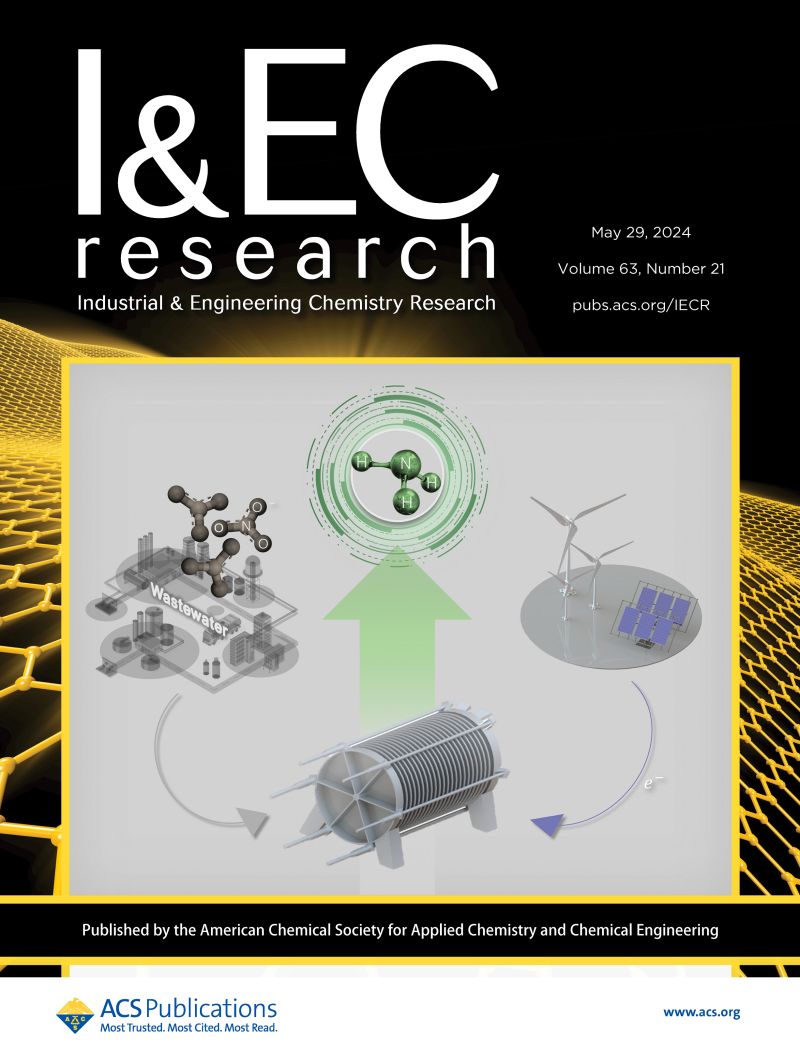IF 3.8
3区 工程技术
Q2 ENGINEERING, CHEMICAL
引用次数: 0
摘要
合成的介孔纯硅沸石(MSilicalite-1)具有丰富的表面硅烷醇,可与 Mo 物种发生适当的相互作用,有利于促进在 MSilicalite-1 上形成大量 Mo7O246- 和 Mo8O264- (Mooct.与支撑在 MZSM-5(0.66 mmol-L-1-min-1)、γ-Al2O3(0.28 mmol-L-1-min-1)和 SiO2(0.14 mmol-L-1-min-1)上的 Mo 催化剂相比,在醇与芳香族二胺的氧化脱氢偶联反应中,MSilicalite-1 上的 Mo 催化剂以 2.23 mmol-L-1-min-1 的初始反应速率有力地提高了反应活性。)这是因为所形成的 Mooct.物种在 Mo-O-Mo 键中具有丰富的负氧阴离子,通过氧阴离子与苯甲醇中的苄碳或苄氢结合,有利于苯甲醇的化学吸附,在另一种反应物 1,2-二氨基苯的帮助下,促进氧化转化形成苯甲醛的关键中间体,诱导形成最终产物苯并咪唑。本文章由计算机程序翻译,如有差异,请以英文原文为准。

Unique Coordination Structure of Mo Species on MSilicalite-1 Robustly Boosting the Reaction Activity of Oxidative Dehydrogenative Coupling of Alcohols with Aromatic Diamines
The synthesized mesoporous pure silica zeolite (MSilicalite-1) had abundant surface silanols that could interact appropriately with the Mo species, which was conducive to promoting the formation of numerous highly active octahedral Mo species in the form of Mo7O246– and Mo8O264– (Mooct.) on MSilicalite-1, robustly boosting the reaction activity with an initial reaction rate of 2.23 mmol·L–1·min–1 in the oxidative dehydrogenative coupling of alcohols with aromatic diamines, as compared to the Mo catalysts supported on MZSM-5 (0.66 mmol·L–1·min–1), γ-Al2O3 (0.28 mmol·L–1·min–1), and SiO2 (0.14 mmol·L–1·min–1). This is because the formed Mooct. species had abundant oxygen-negative anions in the Mo–O–Mo bond, which benefited the chemisorption of benzyl alcohol through the oxygen anions binding to the benzylic carbon or benzylic hydrogen in benzyl alcohol, promoting the oxidation transformation to form a key intermediate of benzaldehyde under the assistance of another reactant of 1,2-diaminobenzene, inducing the formation of the final product benzimidazoles.
求助全文
通过发布文献求助,成功后即可免费获取论文全文。
去求助
来源期刊

Industrial & Engineering Chemistry Research
工程技术-工程:化工
CiteScore
7.40
自引率
7.10%
发文量
1467
审稿时长
2.8 months
期刊介绍:
ndustrial & Engineering Chemistry, with variations in title and format, has been published since 1909 by the American Chemical Society. Industrial & Engineering Chemistry Research is a weekly publication that reports industrial and academic research in the broad fields of applied chemistry and chemical engineering with special focus on fundamentals, processes, and products.
 求助内容:
求助内容: 应助结果提醒方式:
应助结果提醒方式:


